Clam Shrimp
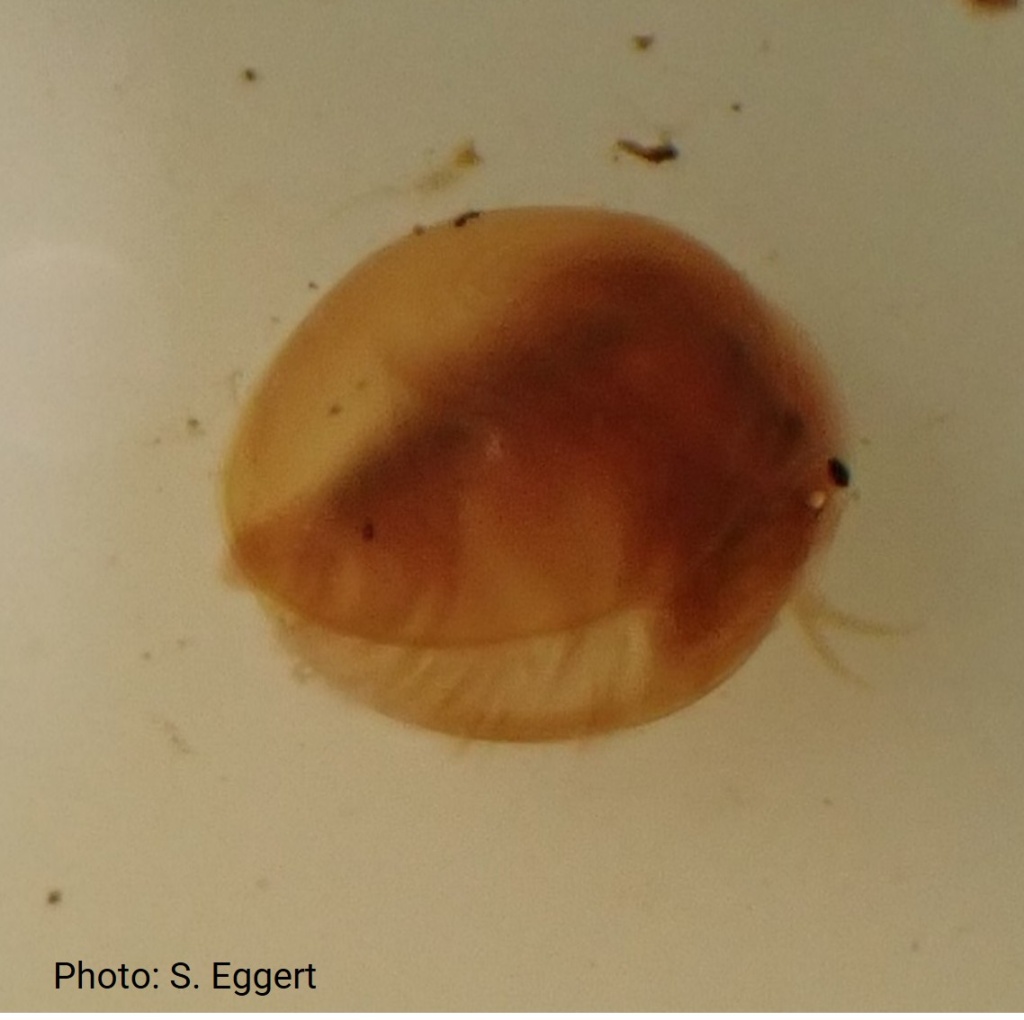
Collector Filterer
Clam shrimp look like small clams.
They swim upside-down in open water in a spiral pattern.
Individuals filter small pieces of organic matter and algae from the water column as their food source.
Dormant eggs (cysts) remain in pond bottoms until conditions are good.
Clam shrimp only live in seasonal ponds.
Photo by S. Eggert
Fingernail Clam
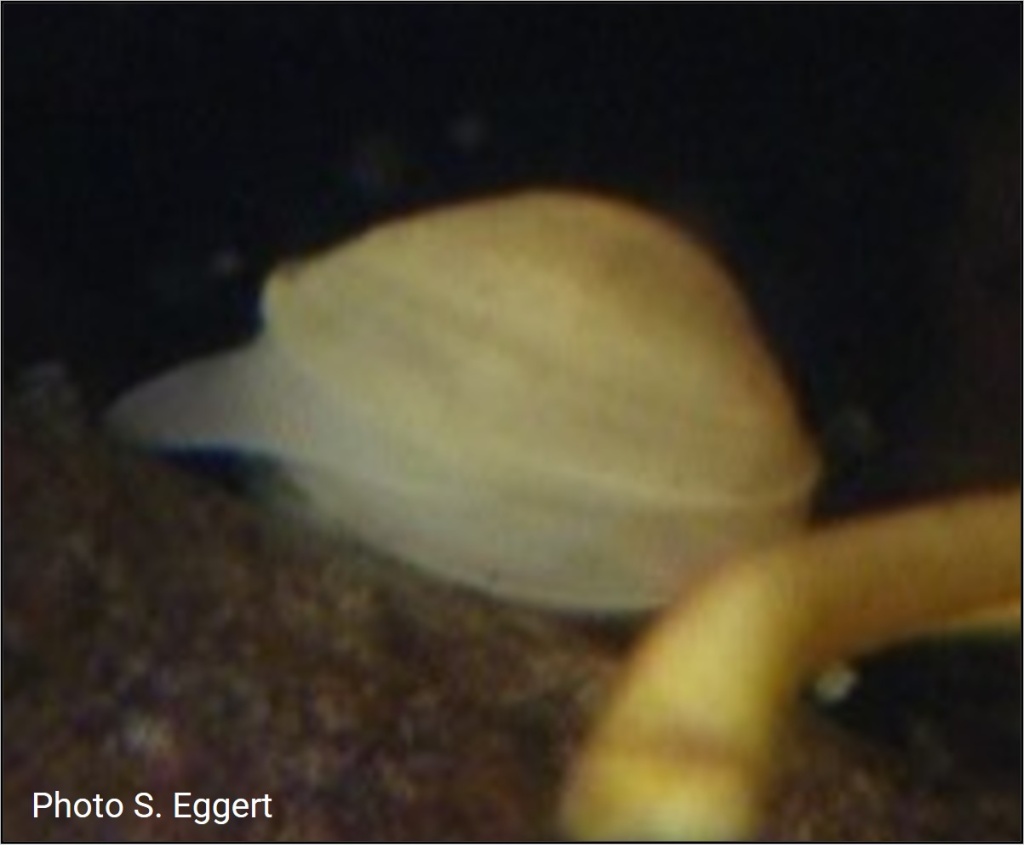
Collector Filterer
Fingernail clams are about the size of your fingernail.
Individuals use siphons to filter small organic matter from the water column for food.
These clams move and climb plants to find better feeding locations using a ‘foot’.
These clams can survive pond drying by burrowing in damp soil as ponds dry.
Photo by S. Eggert
Pond Snail
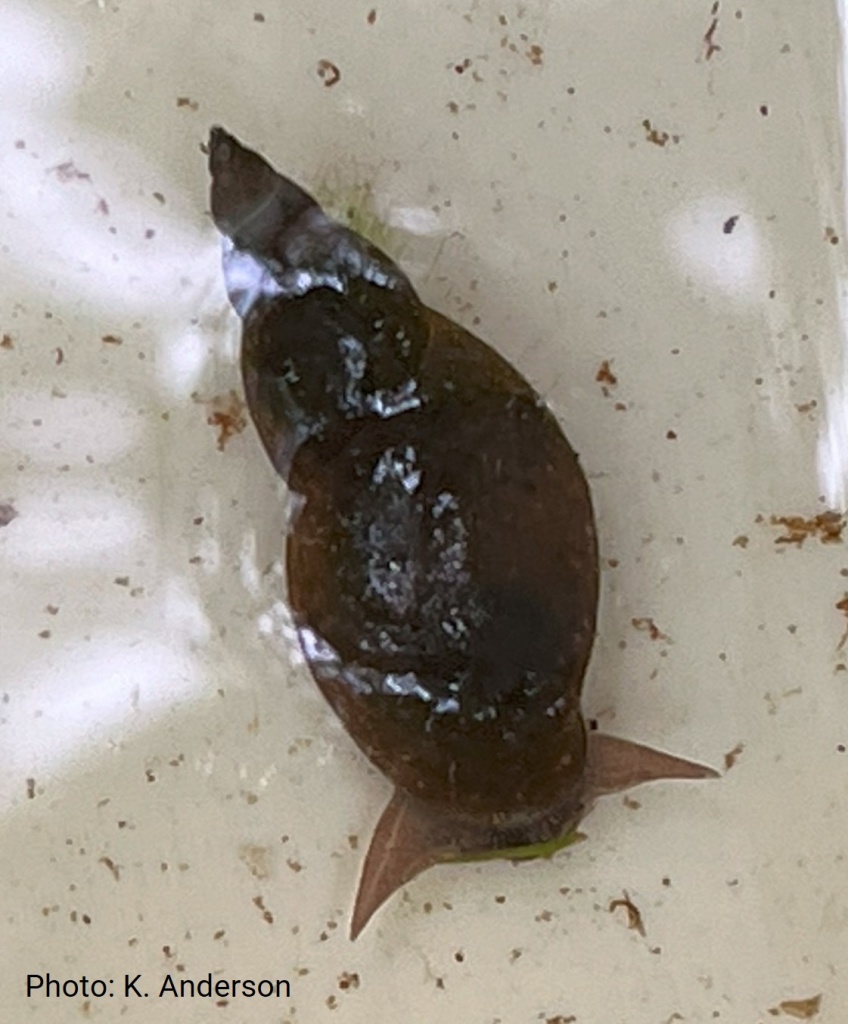
Scraper
Pond snail have large conical shells.
This air-breathing snail is often found near the water’s surface.
These snails use tentacles to detect food.
Pond snails scrape attached algae off wood and plant stems.
Photo by K. Anderson
Orb Snail
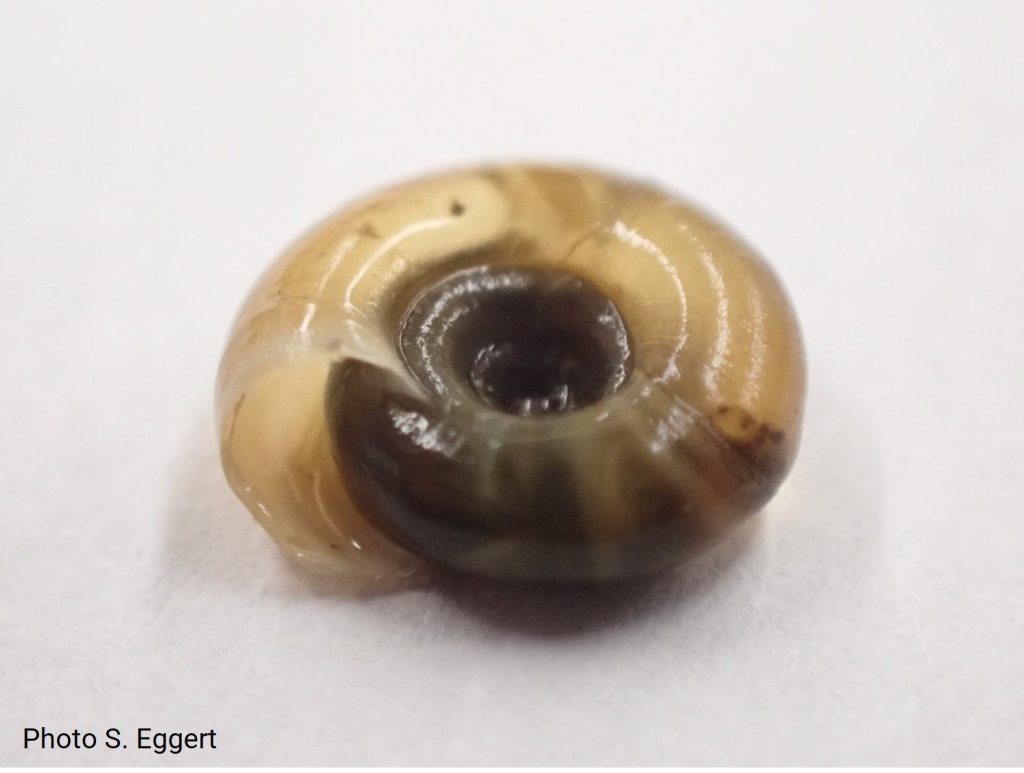
Scraper
Orb snails have coiled, flattened shells.
These air-breathing snails have a lung and come to the water’s surface to get oxygen.
They feed by scraping attached algae off wood and plant stems.
Photo by S. Eggert
Caddisfly Larvae
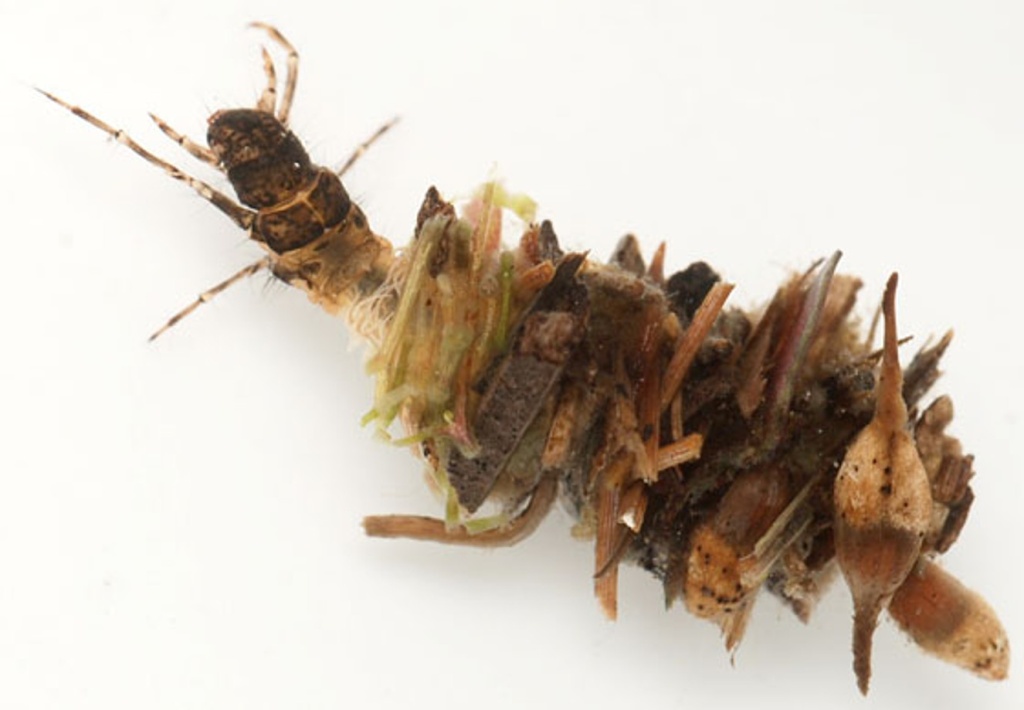
Shredder
This caddisfly larvae builds a protective case from sedge and moss pieces oriented crosswise.
The case also helps the larvae breathe easier by creating water flow through the case.
Larvae shred and eat dead leaves.
Caddisfly larvae pupate and emerge as adults that lay eggs above the water surface.
Photo by S. Eggert
Cranefly Larvae
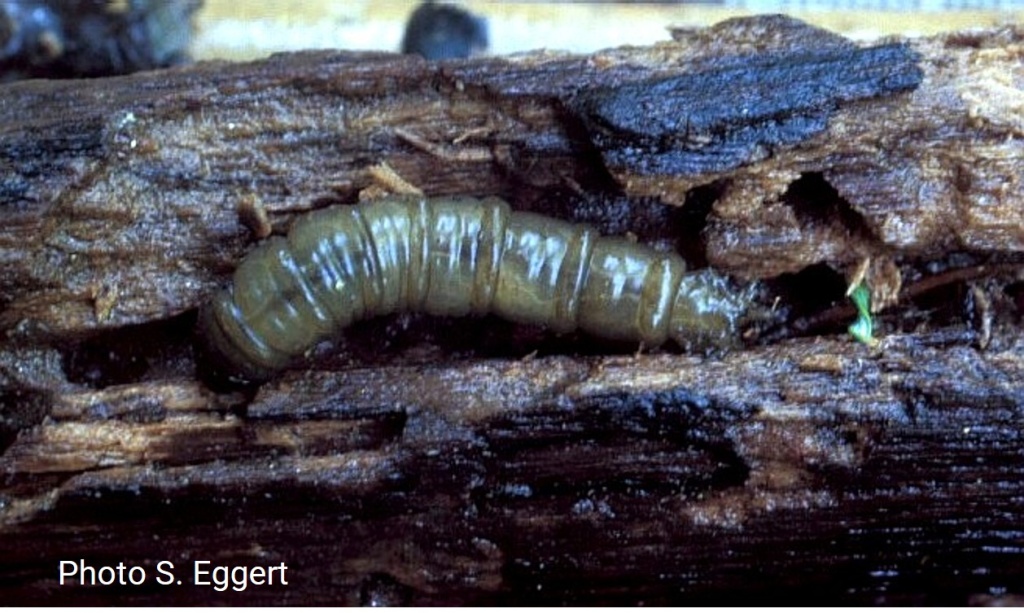
Shredder
These grub-like larvae are commonly found in pond bottoms among dead leaves and wood.
Larvae move by wriggling or crawling.
Cranefly larvae shred and eat dead leaves and soft wood as food.
Larvae pupate and emerge as adult flies.
Photo by S. Eggert
Fairy Shrimp
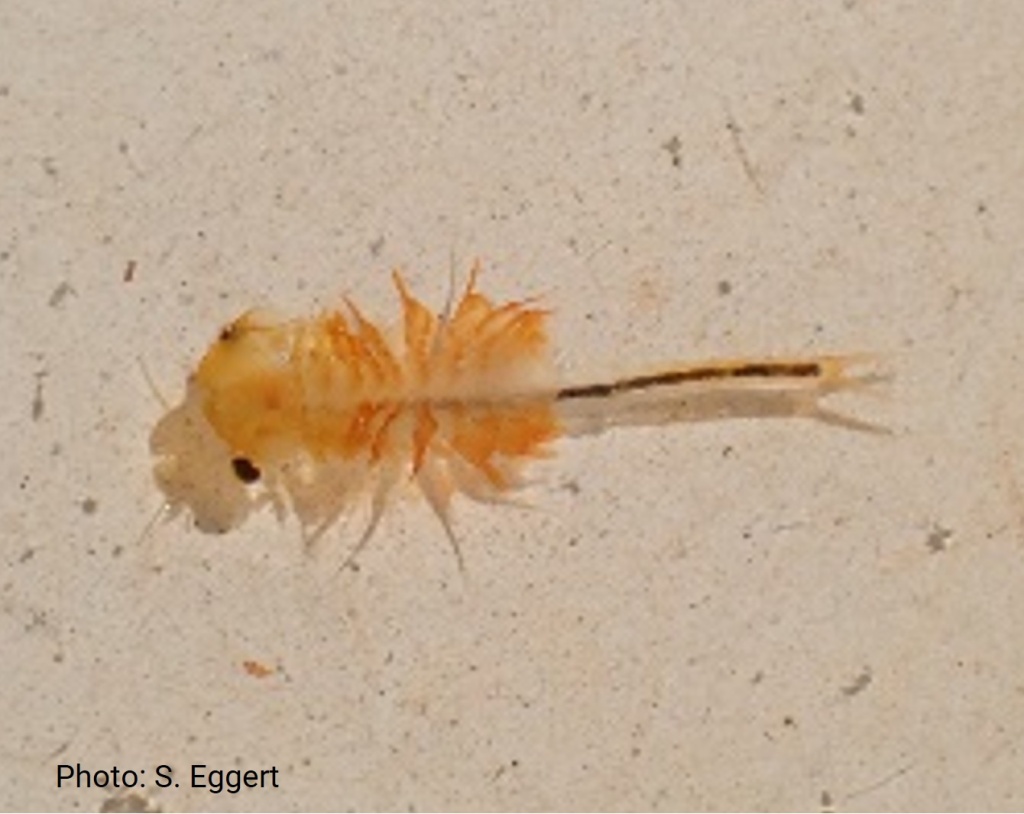
Collector Filterer
Fairy shrimp look like a small shrimp.
They swim on their backs.
They are attracted to bright sunlight.
Using their legs, they filter small pieces of dead organic matter and algae from the water column as their food source.
Eggs survive in pond bottoms for years and hatch when conditions are good.
Fairy shrimp only live in seasonal ponds.
Photo by S. Eggert
Tadpole Shrimp
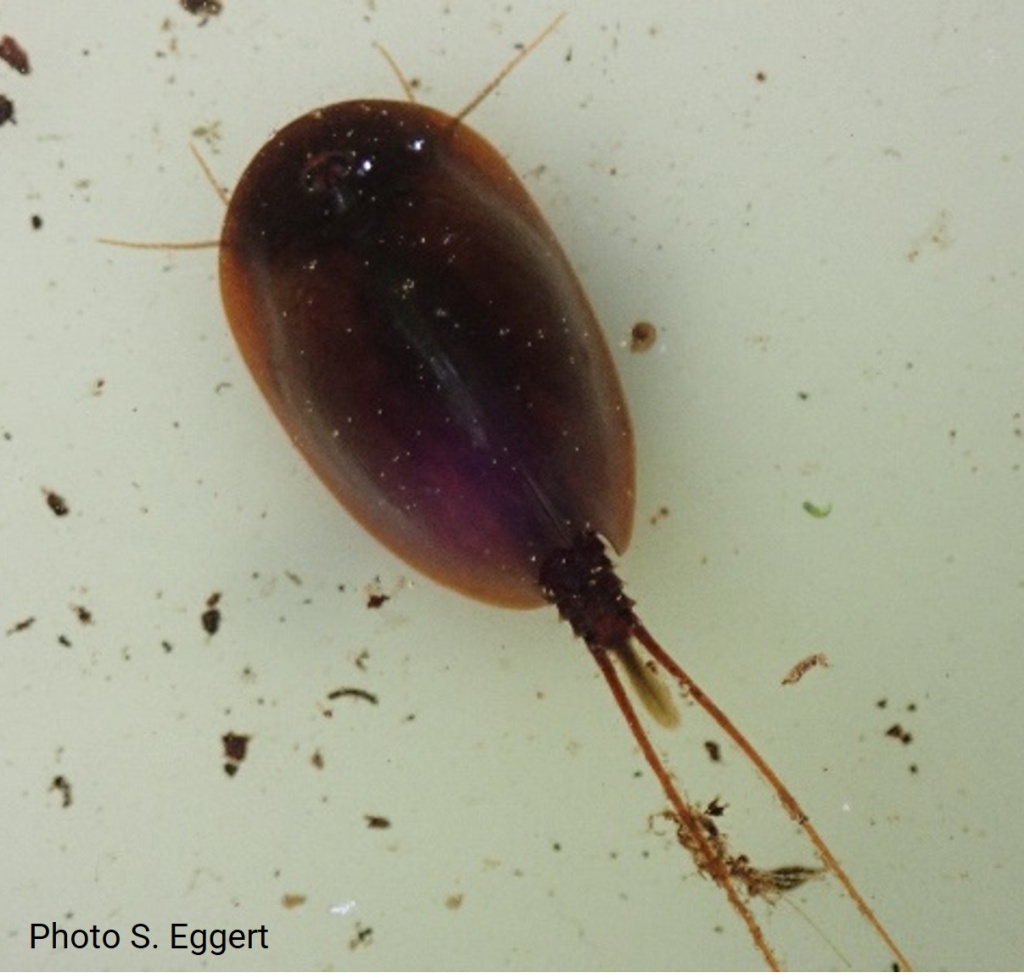
Collector Gatherer
Tadpole shrimp are an ancient organism; they have survived for 300 million years.
Individuals look like a small horseshoe crab.
They feed on dead organic matter or living invertebrates.
Dormant eggs survive in pond bottoms for years and hatch when conditions are good.
Tadpole shrimp only live in seasonal ponds.
Photo by S. Eggert
Predaceous Diving Beetle
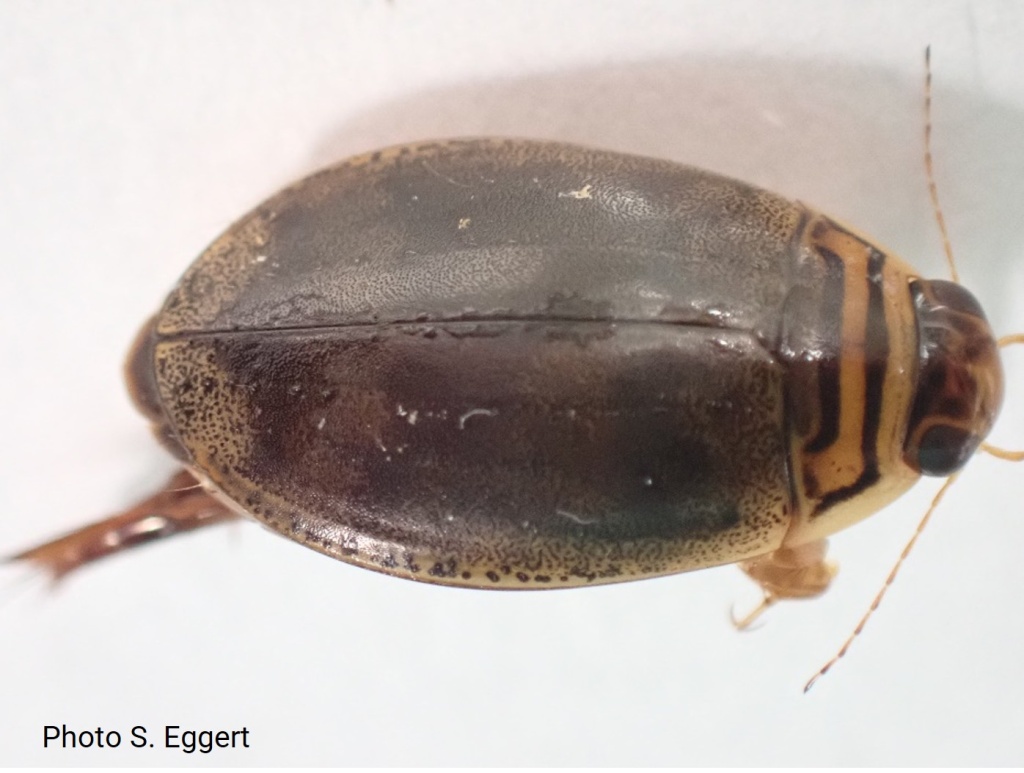
Predator
These diving beetles are excellent swimmers and strong fliers that can fly to new ponds to escape pond drying.
Larvae and adults are ambush predators that eat tadpoles, insects and snails.
Some species breathe by trapping air bubbles under their wings until they resurface to get more air.
Photo by S. Eggert
Dragonfly Larvae
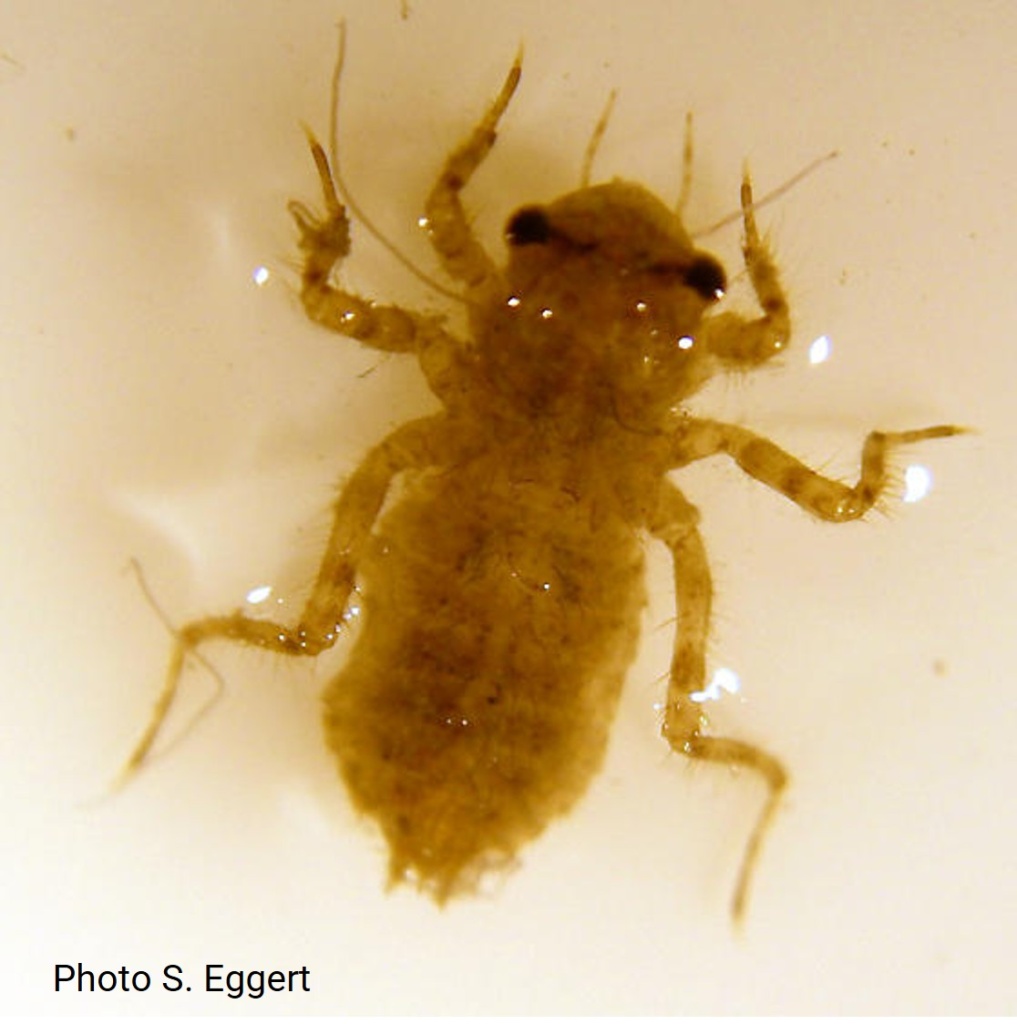
Predator
These nymphs are sit-and-wait predators, burying themselves in the pond bottom with just eyes protruding.
When prey approaches, their hinged jaw quickly unfolds to grab insects, shrimp or tadpoles passing by.
Nymphs can sense change in humidity and will migrate to wetter areas of the pond as the pond dries.
Eventually, nymphs crawl to a plant stem, shed their skin and emerge as a winged adult dragonfly.
Photo by S. Eggert
